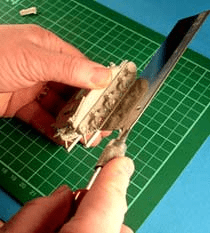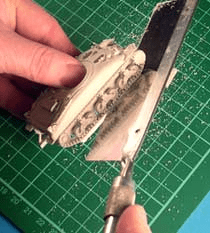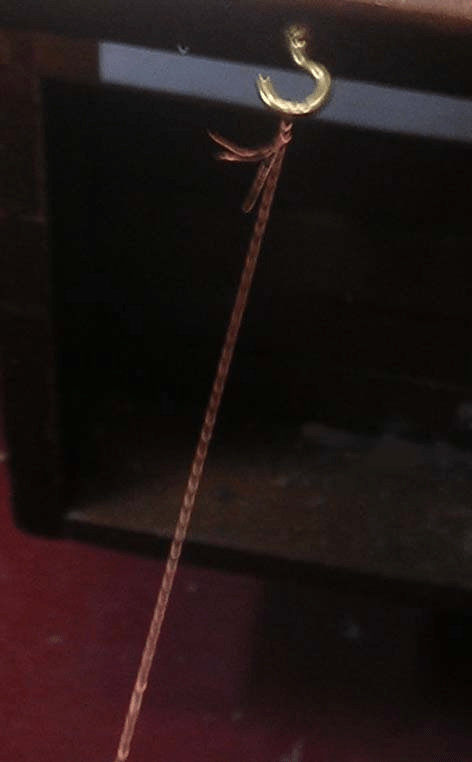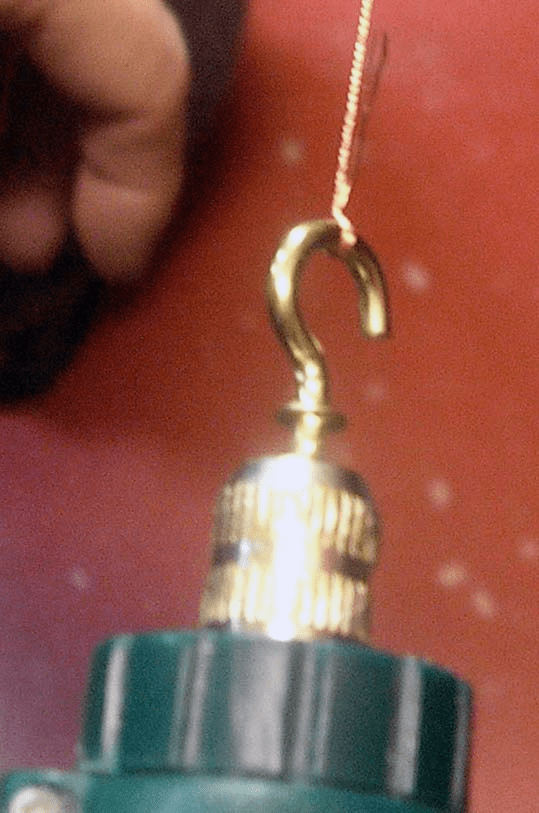Frequently Asked Questions
| Q. | Is your website online shop secure? |
| A. | When you check out you will be automatically redirected to Stripe or PayPal who provide full protection for on-line purchasers. Your financial information is not collected by the Milicast website. |
| Q. | Where are you? |
| A. | We are located in the South side of the City of Glasgow, Scotland about 20 minutes by bus from the city centre and happily welcome visitors to our office. Please e-mail us in advance if you wish to visit, so that we can ensure the office is staffed when you arrive. |
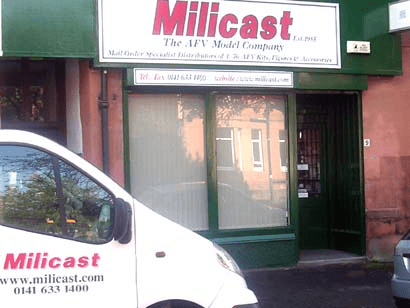 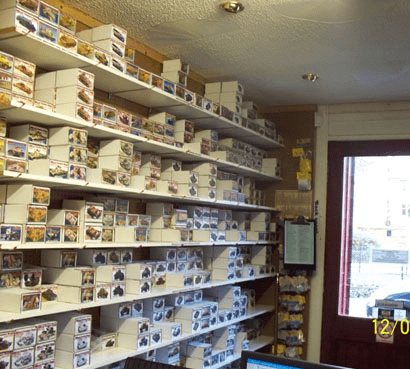 Our office at 9 Rannoch Street, Glasgow G44 4DF Our office at 9 Rannoch Street, Glasgow G44 4DF |
| Q. | What scale do you produce your model kits in? |
| A. | We produce all of our kits in the original "Small Scale" size of 1:76 (20mm). These are compatible with the plastic injection kits of Airfix, Matchbox, Fujimi, etc. |
| Q. | Are your kits smaller than 1/72 scale kits? |
| A. | Sometimes... Over a 20 foot length, the difference between 1/76 and 1/72 is 0.17 inches... However that presumes that the manufacturer has properly scaled the model in the first place. Many plastic kits that claim to be 1/72 are not. Some are 1/76, like the Airfix range and some ESCI/Italeri kits, whilst others can be as big as 1/68, as in some of the Hasegawa kits. Our kits are built to an accurate and constant scale and many customers are happy to add them to their collections which include both 1/76th and 1/72nd scale models. |
| Q. | Are your kits similar to plastic injected kits, and why resin? |
| A. | Somewhat. Our models are Multimedia kits. Resin allows us to produce our kits with a degree of detail that is not always available in plastic injected kits. The use of aluminium, brass rod or brass photo etchings enables us to maintain the scale accuracy. |
| Q. | Why are most resin kits usually more expensive than plastic injected kits? |
| A. | Each resin kit is made by hand and is a very time consuming and labour intensive procedure. The Silicone Rubber moulds are also hand made and have a limited lifespan of approximately 30 to 35 castings. In contrast, injected plastic kits are produced using automated machinery with metal moulds that in some cases last for decades producing tens of thousands of kits! |
| Q. | Which adhesive should I use? |
| A. | We recommend Cyanoacrylate "Superglue" types, although you may prefer to use epoxy resin on larger kit parts. Cement intended for plastic kits cannot be used with resin or metal parts. |
| Q. | Are the materials you use harmful? |
| A. | No. Provided you follow the instructions enclosed and adhere to those of the adhesive manufacturers, there should be no problem. |
| Q. | Are there any special techniques or tools required? |
| A. | No. if you have built a plastic kit then you should be able to build resin kits too. The usual basic modelling tools are required: Cutting Mat, Craft Knives, Emery Sticks, etc. and most importantly a Razor Saw. Most modelers accumulate helpful additional items over the years. Remember that when using any tools, caution must be exercised. When using a saw or sanding a face mask is advisable. |
Cutting Mat,Razor Saw, Snips, Tweezers, Scalpel, Craft Knife, Heavy Duty Knife, Metal Ruler - Everything you would ever need. | |
The biggest job in most resin kits is removing the casting blocks from the model. Pictured below is a Sherman Tank from Battlefield Series. As seen, with a Razor Saw, this is a simple task and takes just a few minutes. Premier Range kits have most of the parts supplied separately on sprue blocks to give greater build options and although the preparation method is similar, the construction times are naturally greater. | |
Score a groove several times between the track section and the block, then saw into the groove with care. | |
| Q. | How do you make the Hawsers as seen on the KVI's, etc., |
| A. | This is a fairly simple process once you have done it a few times. Strip a length of electrical cable, removing each of the copper strands. The end of each (2 or 3) strands is then attached to a fixed point, with the other ends attached to a hook in the chuck of a variable drill. Rotating the bit slowly will entwine the strands to produce an authentic Hawser Cable. Using the minimum amount of "Superglue", rub along the length of cable to seal it. Cut to desired lengths. Alternatively if no electric drill is available, use a simple "Pin Vice" and turn by hand.
|
| Q. | What is the difference between Premiere Range and Battlefield Series kits? |
| A. | The Premiere Range kits are produced with model making and dioramabuilding in mind and come with illustrated parts lists. They have more parts (e.g. separate doors and visors), additional weapons and equipment, optional parts, etc. They provide more build options with some kits even containing aluminium, brass or etched parts where we believe it is required. The Battlefield Series models have a reduced number parts in the kits and do not have dedicated instructions. However, their detail levels and manufacturing standards are the same as the Premiere Range. They typically have their suspension system and/or road wheels cast in place, but once painted and given the personal touch, are usually difficult to tell apart from most traditional kits. Some models cannot be accurately reproduced in a simplified form and still retain scale integrity and accuracy. Those will always be Premier kits. |
| Q. | What do I do if I have any problems with your kits? |
| A. | Simply contact us. We take pride in our products and if you are dissatisfied with the kit then please let us know and we will do our utmost to resolve the problem. |
| Q | Do your kits come with Decals? |
| A. | Generally, no. Our kits do not have decals supplied with them unless explicitly mentioned in the kit's description. However we carry the full ranges of both Aleran and Dan Taylor Modelworks which covers most of our models. |
| Q. | What if I have more questions? |
| A. | Browse the site and if you still have questions, please contact us by e-mail: info@milicast.com or via the Contact Us page |



